
Marcel Reich-Ranicki was a Polish-born German literary critic and member of the literary group Gruppe 47. He was regarded as one of the most influential contemporary literary critics in the field of German literature and has often been called Literaturpapst in Germany.

Walter Serner was a German-language writer and essayist. His manifesto Letzte Lockerung was an important text of Dadaism.

Ricarda Huch was a pioneering German intellectual. Trained as an historian, and the author of many works of European history, she also wrote novels, poems, and a play. Asteroid 879 Ricarda is named in her honour. She was nominated for the Nobel Prize in Literature seven times.

Otto Julius Bierbaum was a German writer.

Baindt Abbey, otherwise the Imperial Abbey of Baindt, was a Cistercian nunnery in Baindt in the district of Ravensburg in Baden-Württemberg, Germany.
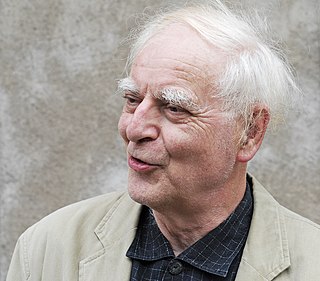
Adolf Muschg is a Swiss writer and professor of literature. Muschg was a member of the Gruppe Olten.

Günter Kunert was a German writer. Based in East Berlin, he published poetry from 1947, supported by Bertold Brecht. After he had signed a petition against the deprivation of the citizenship of Wolf Biermann in 1976, he lost his SED membership, and moved to the West two years later. He is regarded as a versatile German writer who wrote short stories, essays, autobiographical works, film scripts and novels. He received international honorary doctorates and awards.

Arnold Stadler is a German writer, essayist and translator.

Fahr Convent, is a Benedictine convent located in the Swiss municipality of Unterengstringen in the canton of Zürich. Located in different cantons, Einsiedeln Abbey and Fahr Convent form a double monastery, overseen by the male Abbot of Einsiedeln, no converse arrangement appears to be available for the Abbess of Fahr. Fahr and Einsiedeln may be one of the last of such arrangements to survive.
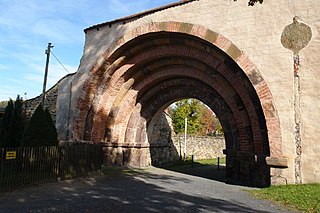
Altzella Abbey, also Altzelle Abbey, is a former Cistercian monastery near Nossen in Saxony, Germany. The former abbey contains the tombs of the Wettin margraves of Meissen from 1190 to 1381.
Edzard Schaper was a German author. Many of his works describe the persecution of Christians.

Annemarie von Nathusius, originally Anna Maria Luise von Nathusius, was a German novelist who wrote boldly about issues of women’s sexuality and lived a distinctly unconventional life. In her books, she criticized the sexual ignorance and exploitative marriages imposed on young women of her class. Her most successful novel was Das törichte Herz der Julie von Voß. The novel Malmaison 1922 was film adapted by Paul Ludwig Stein for the movie Es leuchtet meine Liebe.

Robert Faesi was a Swiss writer and academic concerned with Literature and language

Otto F. Walter was a Swiss publisher, author and novelist, which is well known in the German language countries. Otto Friedrich Walter was the younger brother of Silja Walter, a Benedictine nun in the Fahr Abbey and also a popular writer.
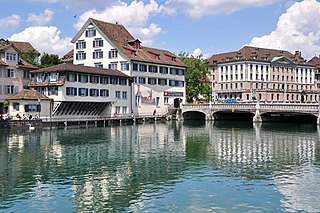
Oetenbach was a Dominican nunnery in the medieval municipality of Zürich in Switzerland. Oetenbach was named after the small stream of the same name at its first location at Zürichhorn, situated outside of the European Middle Ages town walls, but moved to the present Sihlbühl. The nunnery was abolished on occasion of the Reformation in Zürich – the Waisenhaus building is its only remained structure, now the headquarters of Stadtpolizei Zürich.

Werdinsel, also known as Limmatauen Werdhölzli, is an island and protected area in the Limmat in Switzerland.
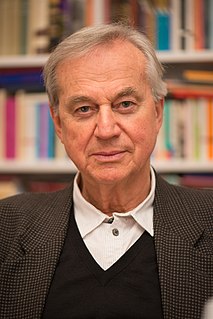
Peter Hamm was a German poet, author, journalist, editor, and literary critic. He wrote several documentaries, including ones about Ingeborg Bachmann and Peter Handke. He wrote for the German weekly newspapers Der Spiegel and Die Zeit, among others. From 1964 to 2002, Hamm worked as contributing editor for culture for the broadcaster Bayerischer Rundfunk. He was also a jury member of literary prizes, and critic for a regular literary club of the Swiss television company Schweizer Fernsehen.
Hedwig Forstreuter, was a German journalist and writer.
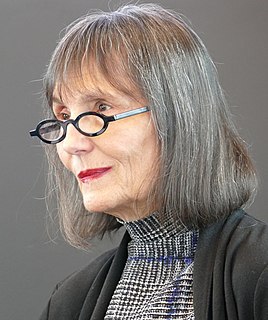
Ilma Rakusa is a Swiss writer and translator. She translates French, Russian, Serbo-Croatian and Hungarian into German.

Hanns Theodor Wilhelm Freiherr von Gumppenberg was a German poet, translator, cabaret artist and theatre critic. He used the pseudonyms Jodok and Professor Immanuel Tiefbohrer.


















